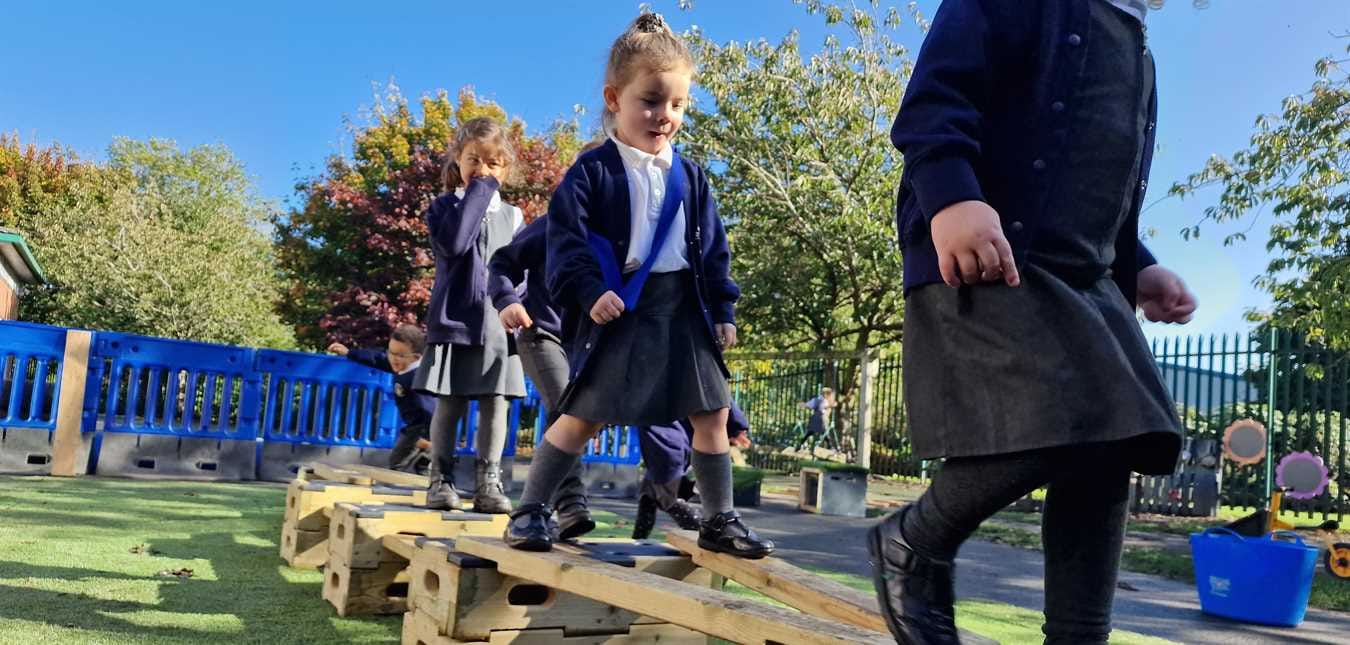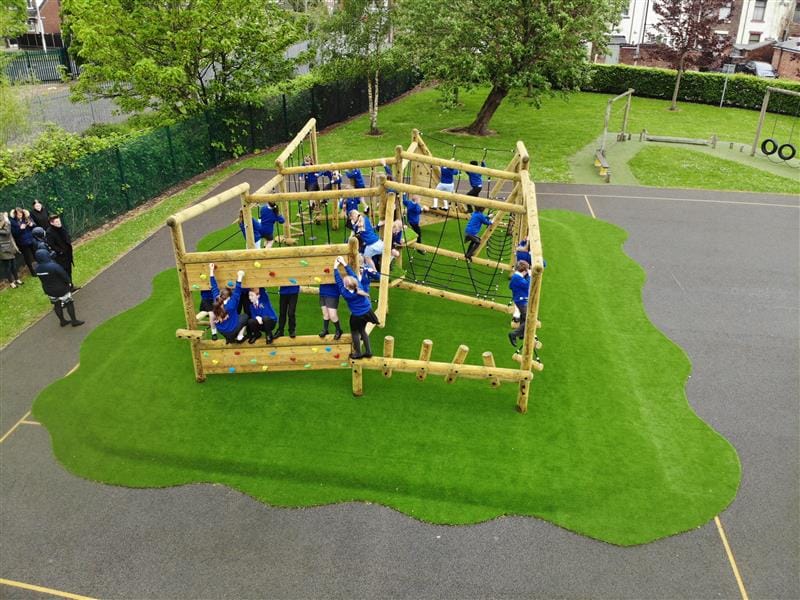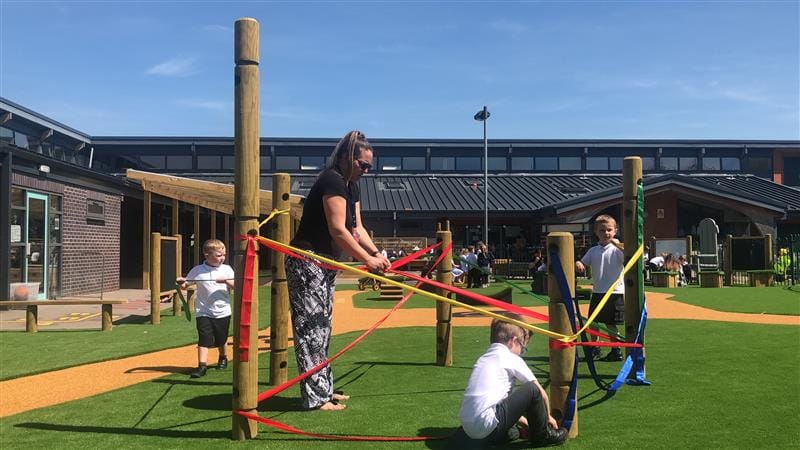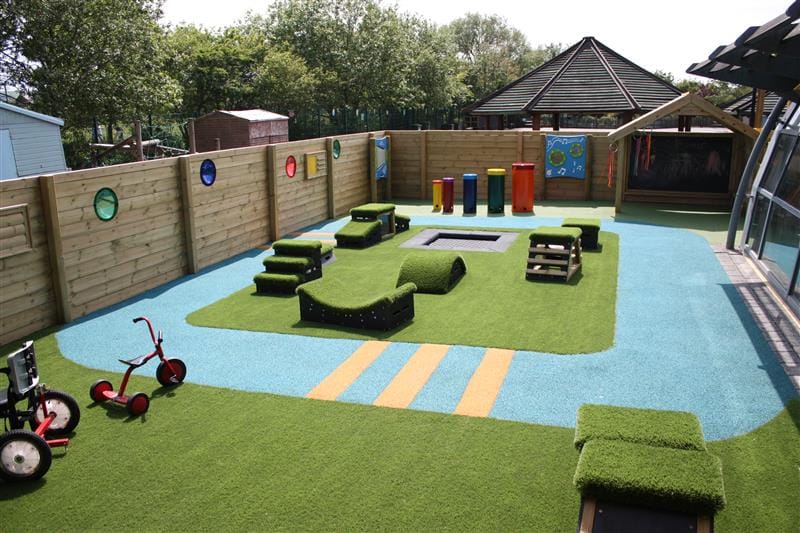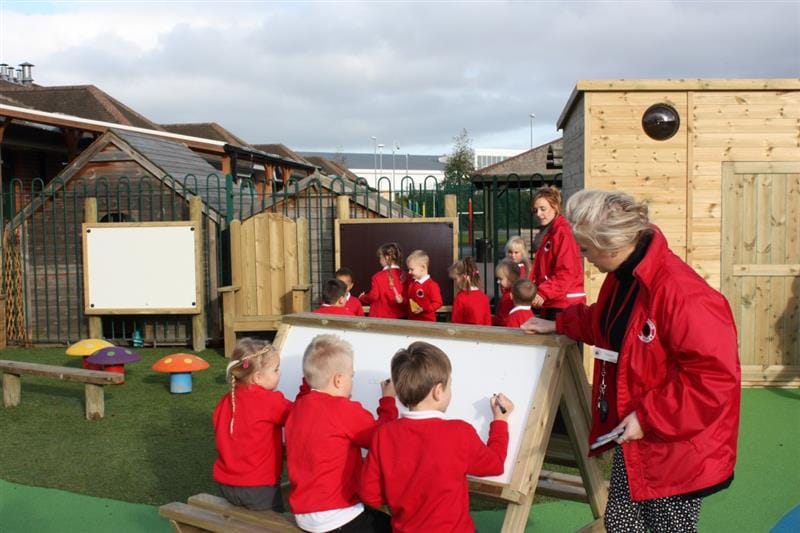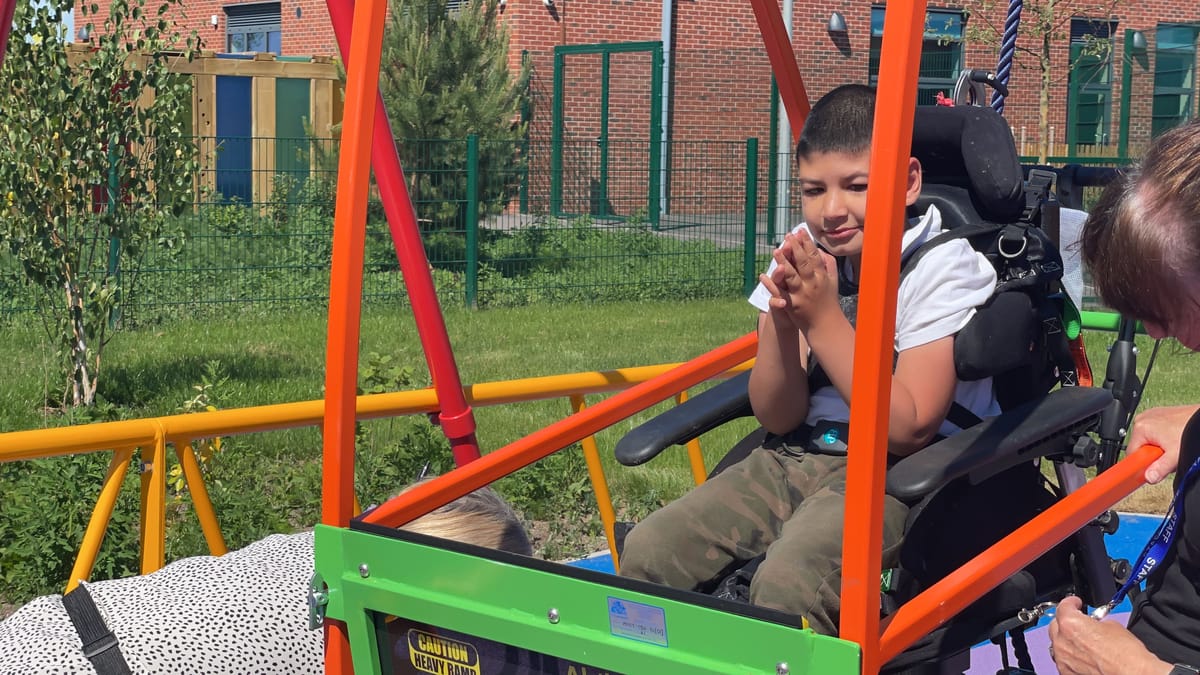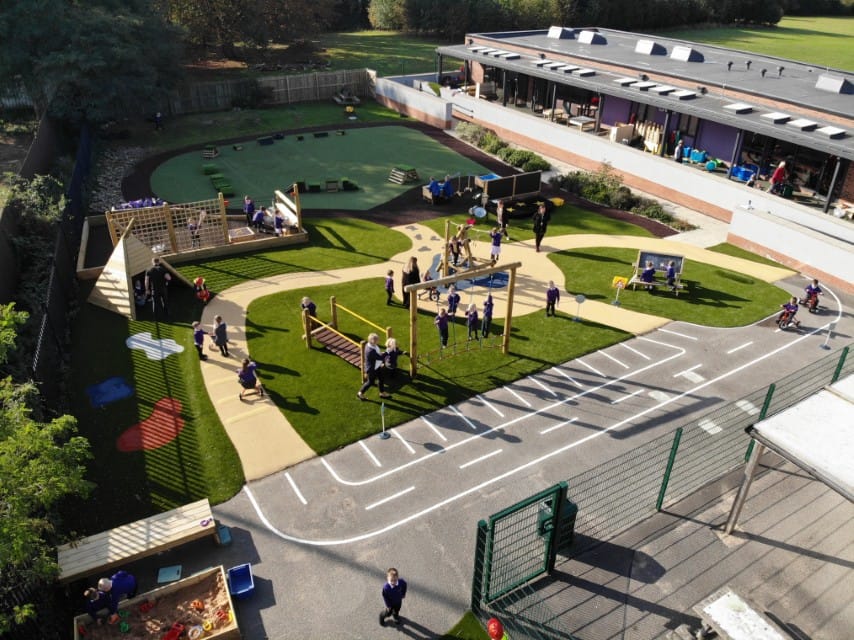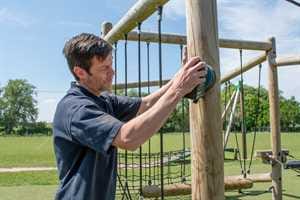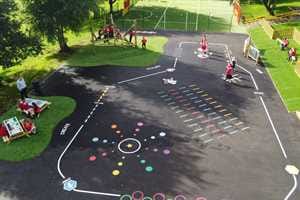
Playground Design
Tips to Improve School Playgrounds and Behaviours!
Looking for creative tips to improve your school grounds and transform them into vibrant outdoor spaces for learning and play?! If that's the case, then you've found the right page!
Discover how you can improve your school playground by making a few simple changes and how enhancing your school playground can create a safe and enjoyable environment that fosters imaginative play, physical activity, and social interaction.
The Importance of School Grounds
School grounds play a vital role in the development and well-being of students. They provide a safe and enjoyable environment for physical activity, socialization, and imaginative play. A well-designed school ground can have a positive impact on students’ physical and mental health, as well as their academic performance.
School grounds can also serve as a hub for community engagement and environmental responsibility, promoting sustainable practices and a sense of ownership among students, staff, and parents.
Improve School Playground Behaviour With a Refreshed Playground Full of Learning and Play Opportunities
A dull and uninspiring playground and unkempt school grounds can leave children feeling unexcited, uninspired and even lead to them misbehaving, at break times.
Investing in your school playground and making even simple changes to the outdoor environment can improve the space and the students’ behaviour. Enhancing the playground can also provide more opportunities for physical activity and engagement during the school day.
A National School Grounds survey found that 65% of schools believed school ground improvements encouraged learning and 73% found behaviour improved. It’s important for children to be stimulated both inside and outside of the classroom.
5 Ways To Improve Your School Playground
School playgrounds often have problem areas which are marked as out of bounds, have fallen into disrepair or in which students are more likely to misbehave.
Any areas that are restricted or unsafe tend to fall into this category.
Problem areas will be different depending on the playground and the school environment. Once these areas have been identified, it’s time to think about how they could be improved.
1. Using all the space
In some cases, making changes to the outdoor space in school grounds can be as simple as cleaning up any litter or areas with leftover materials. Cutting back overgrown plants and trees, and clearing spaces to create more space which the learners can actually use can make a big difference.
Think about ways in which a space can be transformed. If there is only a small plot of flat grassland, how about planting a flower bed or using it to grow plants for science lessons? If the cleared area is really muddy, how about making a mud kitchen or dig pit?
Schools should try to avoid having any ‘restricted’ areas in their outdoor space so that students can move freely in the outdoors during break times.
2. Zoning can affect playground behaviour
Creating zones for specific activities can be beneficial for schools. When it comes to outside space, most schools will have already separated areas for ball games and areas where ball games aren’t allowed. However, it could also be worth including zones to encourage different types of activities.
Zones could include quiet areas with sheltered seating, nature areas with plants and flowers, and areas of the playground with grid games and play equipment.
You can even create zones by using colourful Wetpour surfacing.
Such spaces have been shown to increase physical activity by encouraging physical exercise, decrease bullying and reduce playground injuries. All of these factors can help with students' health and well being at school, helping them to develop and stay focused.
3. Improving Play Equipment
Improving your school’s outdoor play equipment can have a big impact when it comes to engaging children and managing behaviour at break times.
Children naturally want to play and are constantly looking for opportunities to do so. Old, outdated or broken equipment isn’t fun for anyone and it certainly isn’t going to get children playing or collaborating. In addition to play equipment, consider incorporating a school garden to provide hands-on learning opportunities and connect students with nature.
A simple waterproof, child friendly storage solution can be filled with: skipping ropes, cones, soft balls and similar items can be exciting to primary aged learners.
For schools with larger budgets, trim trails, dens, playhouses and creative play equipment can enhance the students’ experience of playing outside in the school grounds.
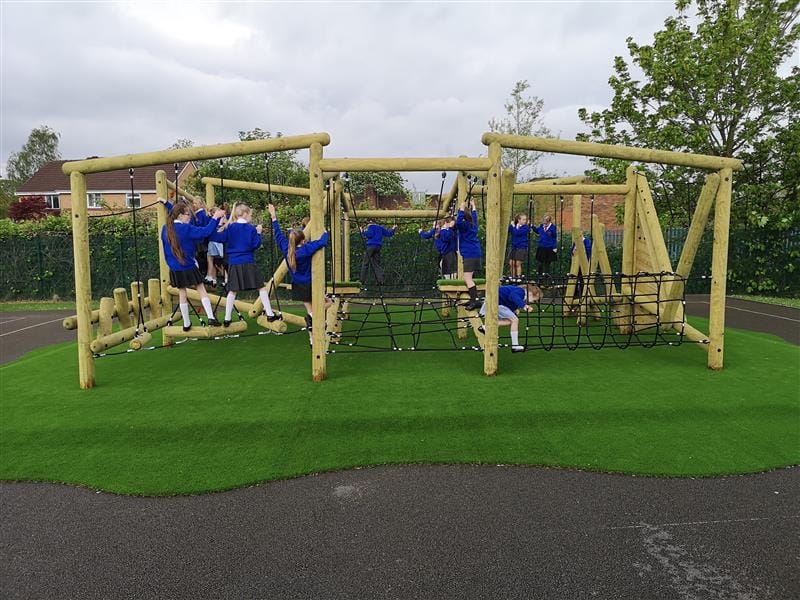
4. Walls and Artwork
If your school is surrounded by bare brickwalls, there's definitely something that you can do to brighten those up! Walls which face the playground could be marked with coloured lines to create grid style games, or with numbers or letters to contribute to numeracy and literacy learning.
Chalkboards could be installed on blank walls to allow children to practise writing numbers and letters. Other walls around the school grounds can be a perfect space for displaying student's artwork or creating a mural together as a school.
In some schools, each year group have contributed a painting for an outside wall, while others have designed a mosaic together.
5. Sensory Areas
Sensory learning is a really important part of child development and is a great way to engage young learners in nursery and primary school. Creating a sensory garden where children can experience different textures and play with different substances is a good way to make use of free space.
Or how about going a step further and creating a ‘Secret Agents Outdoor Lab?' A Secret Agents Outdoor Lab is a science and wildlife area which can include water play, sand play and areas for discovery.
You can quickly create a space that improves both creative thinking and scientific learning as children explore and experiment.

Other Factors to Focus on to Improve Your Playground
Even though the previous 5 factors are important, the next two factors we are going to highlight are vital. By ensuring that these two targets are hit, you can be assured that your playground will be a safe and engaging space for everyone.
Build Inclusive and Accessible Playgrounds
Inclusive and accessible playgrounds are essential for creating a safe and enjoyable environment for all students, regardless of their abilities.
This can be achieved by incorporating sensory play elements, wheelchair-accessible equipment, and adaptable play structures that cater to different age groups and abilities. Inclusive playgrounds promote social interaction, empathy, and understanding among students, which are essential for building a positive and supportive school community.
Ensure Effective Supervision and Monitoring
Supervision and monitoring are critical components of maintaining a safe and enjoyable school playground. Schools should ensure that there is adequate adult supervision at all times, particularly during recess and physical education classes.
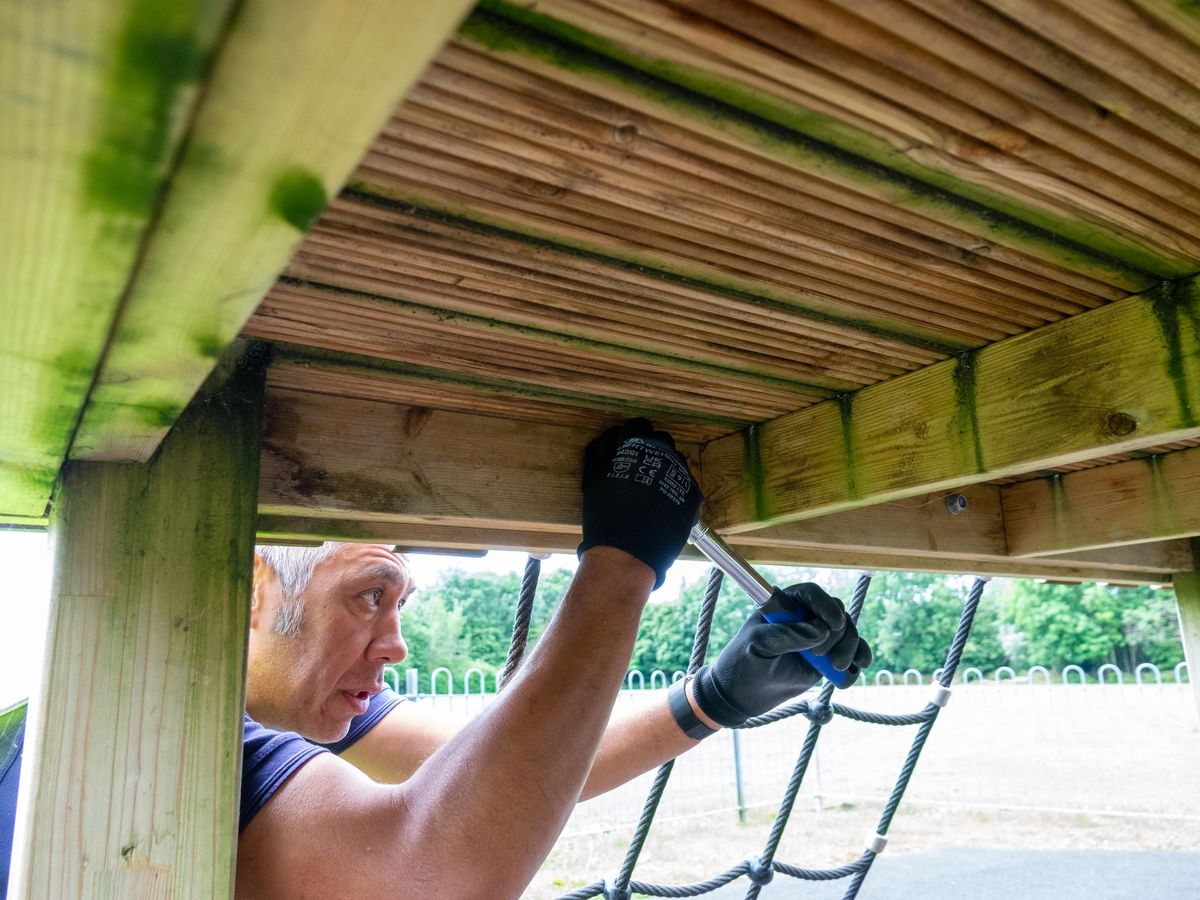
Monitoring playground equipment and facilities regularly can help identify potential hazards and prevent accidents. Schools should also establish clear rules and guidelines for playground behaviour, which should be communicated to students, staff, and parents.
The best way to maintain your playground is by using Pentagon Play's RPII-accredited Playground Inspection and Maintenance service. You can learn more about it by visiting our Playground Inspections and Maintenance service page.
Make sure to read our 10 most common playground maintenance problems blog too, to ensure that you can identify any potential risks to your playground.
Find Some Inspiration Today with Pentagon Play!
Revamping your playground can be an incredibly stressful task, with so many factors needing to be considered. But, Pentagon Play are here to save the day! Reading through the hundreds of case studies we have, you'll quickly learn that we are the go-to for thousands of schools across the nation.
From helping schools design a playground that promotes active play and escapism to other play areas that focus on performance and sensory play, our company know how to make a playground. If you're still unsure, why not speak to a member of our team today and learn how we can help you with your project and transform your setting.
You May Also Like
What OFSTED Want From Your School Playground (taken from actual reports)
